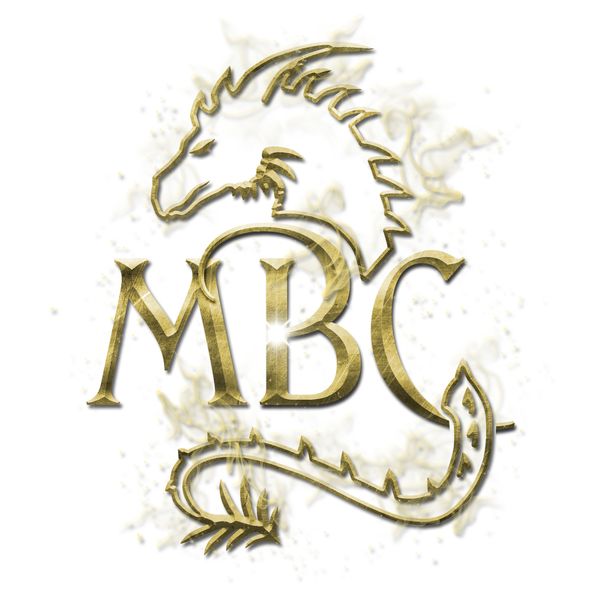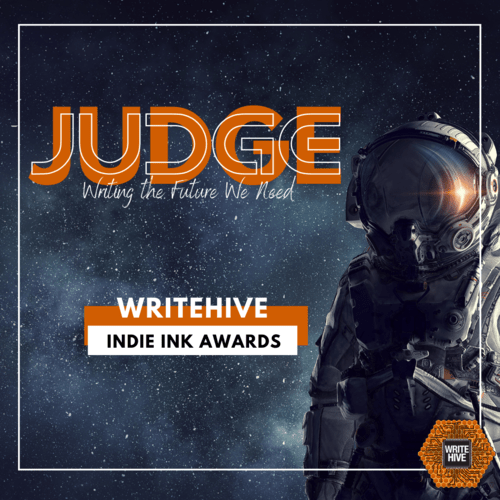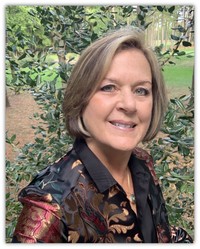.jpg)
Last Updated on 23/02/2024 11:48:56

IFA Author Feature - Heart-to-Heart with Julia Ash, author of The ELI Chronicles
Posted on27/12/2023 09:15:50


Daring, unorthodox, extremely imaginative and downright ballsy, this series is in itself a kind of 'One and Only' in the fantasy genre. An I loved every single page of it!
Of course I had to ask the author for a little Heart-to-Heart, to see a little bit of what's behind the books. And was thrilled when Julia accepted.
Here is what we talked about:
1. Hi Julia and welcome to The Magic Book Corner. To begin could you please tell our readers here a little bit about yourself?
Thank you so much for inviting me into The Magic Book Corner, Laura. Such a pleasure and honor to be here!
Prior to writing fiction full-time, my career was in public relations which involves almost every form of communications there is: writing, public speaking, video, broadcast, website, social media, and photography.
In my childhood, I dreamt of becoming an author someday and I never let go of this aspiration. When the timing was right, I retired early to start my second career as a novelist. I absolutely love fiction writing and have never regretted my decision!
In terms of inside hobbies, I enjoy reading and cooking. Outside, I love hiking, ATV riding, paddle boarding, and boating.
2. Your trilogy, The Eli Chronicles is now complete, with the third book just published. Tell us, how did it all start? What made you decide to set it on paper and what is the inspiration behind it?
I’m a big news watcher, including being attracted to outlandish news that is covered by reputable news organizations but often skimmed over. At the time the premise for my series was germinating in my creative thoughts, the drug flakka (nicknamed the zombie drug) had hit Florida (CNN and CBS), Lyme Disease was being linked to bio-weaponized ticks (CNN and Newsweek), the 20-year anniversary of the first successfully cloned sheep (Dolly) occurred, and artificial intelligence was vastly improving.
My thoughts turned to a question about warfare. What if superpowers exchanged standard weaponry (fleets, planes, soldiers, and munitions) with bio- and techno/cyber- weaponry? What outcomes could threaten humankind? This question started the series.
The One and Only incorporates fictitious and fantastical consequences resulting from an unleashing in 2031 of these frightening forms of weaponry.
On the uplifting side, I was inspired to create a protagonist whom I would want to emulate during a time of crisis—someone who would be loyal to and protective of her family, but still have the courage to fight to save humanity. That character is Ruby Spencer.
3. Your first book, The One and Only is an apocalyptic thriller, while book two, The Tether heads head-long into fantasy. From zombies and an Extinction Level Infection you shift the scene to an intergalactic conflict and vampires. What prompted you to choose this approach?
Great question! I label my book series as dark fantasy because all three of them have ominous themes involving greed (mostly perpetuated in the area of science). Likewise, all three books include one or more literary monsters: zombies, vampires, shifters, or ghosts.
As you noted, The Tether does take a significantly deeper dive into fantasy. Although Lieutenant Colonel Quinton Oxford (“Ox”) is a formidable foe in The One and Only, Ruby would have chewed him up and spit him out in The Tether! While Zagan, her new nemesis in book #2, is equally greedy compared with Ox, Zagan is capable of defeating Ruby. Hence, to find a worthy villain, I had to look beyond Earth :)
Readers are likely to notice that the overarching Extinction Level Infection in all three books isn’t actually a bacteria or virus. The ELI turns out to be greed, inflicted on humanity for personal gain by the corrupt and powerful, without any regard for human survival.
4. In The Tether in particular, you use a unique blend of genres: apocalyptic thriller, fantasy myth and sci-fi. And it all fits perfectly together. How did you pull this off?
Aw, thank you so much for the compliment!
I think I pulled off the blend of genres by weaving threads of realism throughout. If readers are initially grounded in a world they can relate to, then they are more willing to consider the possibility of the improbable.
My favorite book series do just that, such as The Passage by Justin Cronin, The Girl with All the Gifts by M. R. Carey, The Hunger Games by Suzanne Collins, and Twilight by Stephenie Meyer. The same is true of my favorite movies: Signs (with Mel Gibson), I Am Legend (with Will Smith), and World War Z (with Brad Pitt)

5. What type of a genre mix should the readers expect from the last in series - The Turning Point?
In general, The Turning Point continues to be dark fantasy. The consequences of greed continue to threaten humankind’s survival. The specific question for this book is…what might happen if the animals got fed up with how we treated them (especially in the area of science)?
Examining the mix of genres more closely, I think The Turning Point reinstates some of the thriller vibe in The One and Only while keeping the fantasy world of The Tether intact and relevant! This is probably why my BETA readers indicated that The Turning Point falls midway between The One and Only and The Tether, in terms of genre mix.
6. Why literary monsters?
I’ve often wondered why I gravitate to literary monsters when I’m a realist in my everyday life! I’ve come up with two reasons beyond the fact that literary monsters are incredibly interesting:
1) unexpected heroes rise in the most troubling times and crises, and 2) nothing like a fantastical monster to remind humans that we are more alike than different.
I’ve wondered: if a zombie approaches a group of people, will the humans care about the differences between the individuals in the group? My hope is that everyone would work together as humans to survive! I really like the message of unity—of how we’re more similar than different. And we all need each other to survive!
This message is relevant to me, especially since society continues to divide, mistreat, and harm people based on differences.
7. I was downright impressed by the scientific and medical background that you provide in The One and Only. What’s the secret behind it? Research, experience, movies, or something else?
Thank you! First off, I love science, but I’m not a scientist! The secret to making my stories believable is most definitely research.
Take the acronym ZOM-B. It’s been used before, but to my knowledge, I am the first to have the acronym stand for Zoonosis Mutated Bacteria. My research was responsible for that! Bacteria (versus most viruses) can outlive their host. And zoonosis is the transfer of a pathogen from an animal to a human, which is the scenario in The One and Only. Of course, the bacteria mutated to give rise to the zombie. I was tickled with how well science supported my fictitious pathogen!
8. You chose a female lead with a supportive husband. What prompted you to do so?
I regard societal expectations based on grouping people by categories of diversity, such as gender, potentially destructive. I think people should evolve in their lives to reflect their natural tendencies, without preconceived notions imposed on them!
In my series, Ruby is a natural leader. Clay is comfortable as a supporter. They complement each other and their relationship works because they are authentic to themselves!
Embracing who you are, regardless of stereotypes, is a message I believe is important!
9. Why did you name her Ruby? Did you choose the name for a particular reason? Because it sure fits her like a glove.
I love Ruby’s name! I researched names to find the right one. Ruby is named after the gemstone because it symbolizes protection, vitality (blood), love, courage, and royalty. Some believe rubies, not diamonds, are the most powerful stones in the universe. The name was a perfect fit since in The One and Only, Ruby’s unique blood protects humankind from the first wave of the F8 infection.
10. If anyone had told me zombies and vampires would go wonderfully together while topped with a set of cool supernatural powers, I wouldn’t have believed it. And yet, you tackle all of them and pull it off like a charm! From where did you draw your inspiration for this absolutely unique approach?
Most literary monsters are familiar to readers. I simply sprinkled them with some of my own creativity and gave them the ability to use magical gifts and competencies!
I also tried to present the “monsters” in a different light. For example, vampires are often seen as imbalanced beings with bloodlust obsessions. On Athanasia (the vampire planet in my series), most vampires are driven to achieve balance with nature (they heal their food sources) and they consider humans as selfishly taking from nature without giving back. I thought that was an interesting twist on a common trope!
11. The powers the vampires possess are downright amazing. Sculpting, whispering, etc.. From where did these ideas spring?
My vampires can be described as Dracula meets Bewitched!
Samantha Stephens on Bewitched could nose-twitch items into existence or change people into animals and vice versa. Minus the nose-twitching, I decided to call this ability sculpting, like an artist shaping clay to form something new. In the world I’ve created, sculpting requires the use of available resources. For example, if Ruby wants to sculpt a fireball, she would need to channel the fire from flames in a nearby candle.
Like Bewitched, some vampires can teleport themselves across time and space. I’ve called this traveling which is a common word, now used in a slightly different context.
Telepathic mind-reading and communication I decided to call whispering because it also seemed to be a great use of a familiar word. And destroying someone by turning them to ashes is carbonizing because carbon can be produced in the burning of fossil fuels.
On the Dracula side, vampires can typically place their victims in a hypnotic trance or apply mind control. Mine can do the same. In the modern-day trope of vampires, this is called glamouring, so I decided to stick with this established word.
It was fun to name the different gifts and competencies and to designate which characters possessed which gifts. I always had to keep in mind that if I made any of my characters too powerful or indestructible, they’d never be at risk. Authors don’t want that to happen, since it squashes tension! Superheroes have to have weaknesses or shortcomings when it comes to superpowers.
12. Even though your series is jam-packed with action and wonderfully plot oriented, your characters shine. They are all meticulously crafted. From the leads to the secondary ones, you don’t forget to flesh out anyone. Can you tell us a little about how you create them?
This is a great compliment, as I’ve worked hard in the area of characterization!
I create the plot first (what story am I going to tell) and then my characters start to emerge in my mind. I breathe life and uniqueness into those who can drive my plot forward.
For the most part, if characters are given names, then I want readers to know why they’ve been given a role in my book. This practice encourages me to flesh out every named character and to help make sure readers care or understand why the character has been included in the pages of my story. I try to avoid adding a Jane or John Doe (names that simply function as labels).
13. Next to being a badass warrior, Ruby is also a mother and a wife and her tale highlights the difficulties between the members of a family forced to adapt to extraordinary circumstances. Why did you choose to highlight them?
During the 9/11 attack, I was working in a school. As a mother, I desperately wanted to pick up my children at their schools and rush home to the safety of hunkering down with my family. But the children at the school where I worked needed me, too, and I had responsibilities beyond my own family. I can still relive those conflicted feelings today: the drive to protect my own family and the need to keep others safe.
I imagine this is a universal feeling during a crisis, especially if a person’s occupation and/or skills makes them crucial to the well-being or survival of others. Take the current COVID-19 pandemic. Healthcare workers might want to shelter at home with their family to keep loved ones safe, but their occupations are vital to the populous. They can probably relate with Ruby.
I want Ruby to be someone readers will root for, especially considering her willingness to sacrifice for the greater good.

14. The moral dilemmas presented in your series are another highlight for me. Could you tell our readers a little bit about them?
Probably the biggest moral dilemma that subtly threads across all three books is humankind’s struggle with accepting death as a natural part of life.
Ruby was the only infected survivor of the fictitious F8 pandemic. Her plasma developed antibodies which saved the world. She considers this a naturally occurring cure and embraces her ability to save humankind.
Once vampires enter my story, the government learns that their blood heals all diseases. Ruby considers this an unnatural cure since vampires aren’t naturally occurring on Earth.
Therefore, Ruby struggles with the concept of using vampire blood to interfere with the inherent health risks associated with being a human on Earth. In her opinion, using vampire blood for this purpose would have a devastating impact on the planet. With greatly extended lifespans, humans would eventually deplete the Earth’s resources. The world would spiral into starvation.
She also makes the case that even though extraordinary advances can be made in science (like cloning, for example), not all advances should be made. She often refers to Newton’s Law of Physics that “every action has an equal and opposite reaction,” warning people to consider the consequences (or reactions) of “dark science.”
15. I was downright impressed with your villains. They made my hackles rise and I often wished for them to rot in the seventh circle of hell. How were you able to make them so vile?
Like real people, when characters reach the highest levels of “extraordinary” (whether in intellect, wealth, power, and/or talent), they seem to turn in one of two classic directions: good or evil. My villains who have turned toward evil have developed an egregious form of greed and have lost their empathy for others. As Ruby describes, “greed is the envy of hate.”
If you think about the worst displays of greed in history, they conjure extreme negative feelings. So that’s how I’ve created some of my villains.
16. Now that The Eli Chronicles is complete, what’s next? Any plans for a new series or a new novel?
I’m thinking of writing a screenplay for The One and Only. Of course, once I open my mind to new possibilities, who knows what will emerge! Something bizarre might show up in the news and send me exploring in a new direction!
17. And speaking of planning, are you a plotter or a pantser?
I’m a pretty solid plotter, though I’ve learned that other authors in the plotter category are even more detailed than I am.
After I develop my “what if” premise, I create my back-cover text to determine if my story “tease” has the “bones” to be enticing. Most authors write this copy after they’ve written their book, but I find it extremely helpful to start with this exercise. I can identify if the main story-thread is strong enough.
If my story holds promise, my characters start to emerge. I draft an extensive synopsis where I identify all the plot points in each of the three acts. After, I outline each chapter in the first act. (I only outline an act immediately prior to writing it because I don’t want to lock my characters into an inflexible story.)
Sometimes, characters can lead me in a slightly new direction while I’m writing. I suppose this represents a tinge of the “pantser” in me, though it’s more like shorts!!! LOL!
Let’s put it this way: I’ve never just started writing. I’ve always planned my journey before getting in the driver’s seat.
18. On a little more personal note, have you encountered any obstacles and difficulties in your writing career? And how did you overcome them?
The biggest challenge as a self-published author is gaining visibility for my books. Advertising is extremely expensive and it’s difficult to compete with publishing houses which have significant budgets.
This is one reason why bloggers and reviewers make such a huge difference in the world of indies! Self-published authors like me are so grateful to bloggers and reviewers! In fact, this interview has made me over-the-moon appreciative :)
Thank you so much, Laura, for thinking of me and wanting to know more about my storytelling and writing!
19. And lastly, is there any advice you would give to other Indie authors out there? Or perhaps a message to the readers?
To indie authors: Never give up and never stop learning. Those two strategies have greatly helped me in my journey!
To readers: Thank you for joining Ruby in her quest to never give up and to never stop learning! That’s how she saves the world :)

About the author: Julia Ash

JULIA ASH writes dark-fantasy and paranormal thrillers. The ELI Chronicles is a three-books series: The One and Only (April 2018), The Tether (April 2019), and The Turning Point (June 2020).
As a realist with a passion for the fantastical, Ash enjoys reading and writing fresh twists involving monsters in literature (zombies, vampires, ghosts, and shifters).
She lives with her husband Rick and two Brittany bird-dogs on Maryland’s Eastern Shore.
You can get in touch with Julia here:
Website: www.juliaashbooks.wordpress.com
Facebook: Facebook.com/JuliaAsh
Twitter: @Author_JuliaAsh
Instagram: @julia.ash.books
Goodreads: The One and Only, The Tether, and Author Dashboard
Buy here books here:
Amazon: The One and Only, The Tether and The Turning Point
Barnes & Noble: The One and Only, The Tether and The Turning Point
Kobo eBooks: The One and Only, The Tether and The Turning Point

Follow via Email
Enter your email address to follow this blog and receive notifications of new posts by email
Join other followers





